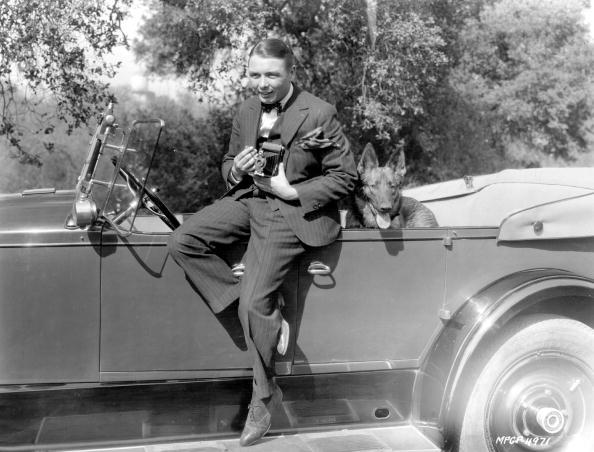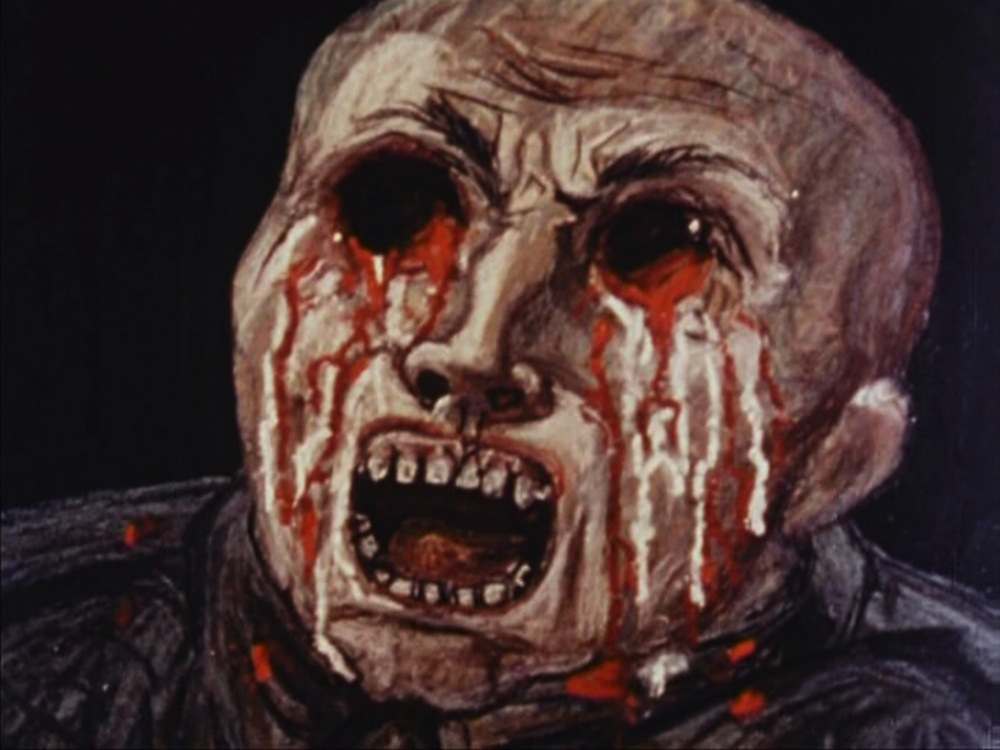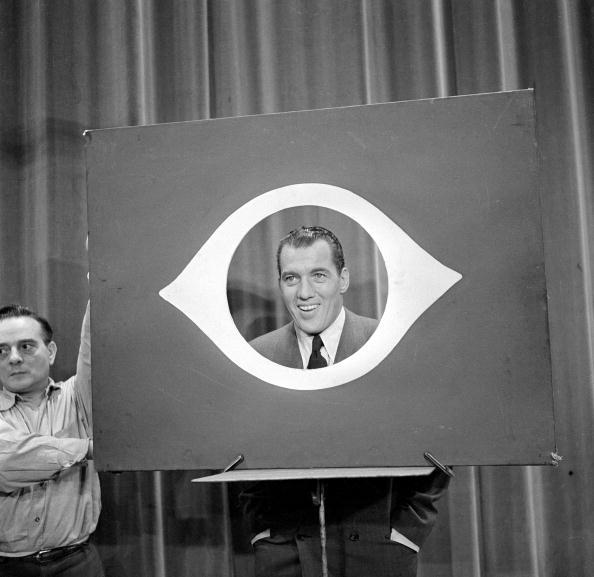In the early 1950s, trained painters Peter Foldes and his wife Joan began work in their kitchen on the anti-nuclear film A Short Vision.
Narrated by James McKechnie, the film was an animated taster for what awaited mankind. It was first broadcast on The Ed Sullivan Show on May 27 1956.
Sullivan’s Sunday night prime-time TV variety programme showcased music, comedy and, in this instance, face-melting armageddon.
The Bomb was, of course, on people’s minds. On November 1, 1952, the US had tested an atomic bomb on Enewetak Atoll, “with a yield of 10.4 megatons (over 450 times more powerful than the bomb dropped on Nagasaki during World War II).”

circa 1952: The mushroom cloud of fire and smoke rises 40,000 feet in two minutes after the Hydrogen Bomb explosion at Eniwetok Atoll in the Pacific. (Photo by Three Lions/Getty Images)
Was total annilihation a good topic for an entertainment show? Sullivan’s trail to his 14 million viewers contained a health warning:
“Just last week you read about the H-bomb being dropped. Now two great English writers, two very imaginative writers – I’m gonna tell you if you have youngsters in the living room tell them not to be alarmed at this ‘cause it’s a fantasy, the whole thing is animated – but two English writers, Joan and Peter Foldes, wrote a thing which they called A Short Vision in which they wondered what might happen to the animal population of the world if an H-bomb were dropped. It’s produced by George K. Arthur and I’d like you to see it. It is grim, but I think we can all stand it to realize that in war there is no winner.”

circa 1925: George K Arthur, the stage name of G K A Brest ( 1899 – 1985 ) the diminutive but plucky British hero of the silent screen who later went to Hollywood and then became a financier and distributor of art shorts. Pictured sitting on the side of his sports car with his alsatian dog in the back, he is currently filming ‘The Exquisite Sinner’ for Metro_Goldwyn-Mayer. (Photo by Margaret Chute/Getty Images)
The film had been shown first at the National Film Theatre in London. On January 26 1956, the Times reviewed the “Cartoon of the End of the World”:
A SHORT VISION, made by Joan and Peter Foldes, has little animation. It is rather a series of powerful, static drawings dissolving to show the death and consumption of all living things at the explosion that brings about the end of the world; it is a work of sombre imagination.
Sullivan had seen it. He said: “I figured with the H-bomb just being let go of last week it was apropos.” It was, said Sullivan, a “plea for peace”. But it would bring no peace of mind for the children who didn’t leave the room.
On the day after broadcast, the New York World-Telegram and Sun screamed: “Shock Wave From A-Bomb Film Rocks Nation’s TV Audience.”
The excellent Conelrad transcribes:
To some it was “seven minutes of terror.” To others it was “the best piece of anti-war propaganda ever shown.”
Such was the reaction of millions of viewers last night to a chilling cartoon film depicting the destruction of the world by atomic warfare. But almost all agreed that they sat shocked and spellbound as people were disintegrated before their eyes. It was shown on Ed Sullivan’s Toast of the Town on CBS television [editor’s note: Sullivan changed the name of his program from Toast of the Town to The Ed Sullivan Show in 1955].
Mr. Sullivan told this newspaper today that that calls are pouring in, both to his own office and the network, and, that in response to many requests, he will repeat the showing on his June 10 show.
He said several people on his show warned him that it was “too grim” for TV consumption before the film was run last night. But, he explained, he considered it a powerful plea for peace and “I figured with the H-bomb just being let go of last week it was apropos.”
The toastmaster said he saw the film in England where it received rave notices from such papers as the London Times and Manchester Guardian. He resolved to give it an American premiere. It was made by a young husband and wife team, Peter and Joan Foldes, who won first prize at the Cannes Film Festival for their first cartoon, “Animated Genesis,” a history of evolution.
The austerely drawn film is narrated in a calm British voice. The voice tells of a “Thing which, as it flies overhead, burns everything living into a skeleton and at last destroys itself.”
As the Thing comes swiftly, noiselessly, irresistibly, animals, who see it first, are so terrified (or compassionate) that they release their captives. The owl looks up and the rat runs free from its clutching claws. The deer darts free from the leopard’s grasp.
Then the bomb explodes in midair.
The people are asleep and faces of children and adults are shown in repose. In stages the faces change to skeletons. “Their leaders looked up and their wise men looked up, but it was too late.”
All who saw it, the people and the animals, were destroyed. “When it was over, there was nothing left but a small flame. The mountains, the fields, the city and the earth had all disappeared, and it was cold, except for the small flame.”
Spines tingle for a moment as the eerie flame glows—“and then I saw it, still flying around the flame. And now it looked like a moth and it, too, was destroyed, and the flame died.”
Mr. Sullivan said he deliberately showed the eerie cartoon just before sign-off “figuring that youngsters should have been asleep anyway,” but he warned that it “wasn’t for youngsters.” Many small fry, of course, took a peak anyway and the MC braced himself for a barrage of squawks from mothers about the gruesome “bedtime story.” As one father said, “Sullivan’s always billing ‘something for the kids.’ This was kind of rough.”
He said wires and phone calls take the turn either “Thanks for having the guts to run it” or “It was a terrifying thing to do.” The show’s rating was 37.2 against NBC’s 7.2.
The film will be distributed commercially here in the fall by George K. Arthur, producer and distributor, 654 Madison Ave. The critic of the London Times said of it “In five minutes I was more persuaded than in ten years since Hiroshima.”
So horrible was the film that on June 10th 1956, Sullivan broadcast it again.
And now without further ado….The End:
Would you like to support Flashbak?
Please consider making a donation to our site. We don't want to rely on ads to bring you the best of visual culture. You can also support us by signing up to our Mailing List. And you can also follow us on Facebook, Instagram and Twitter. For great art and culture delivered to your door, visit our shop.










